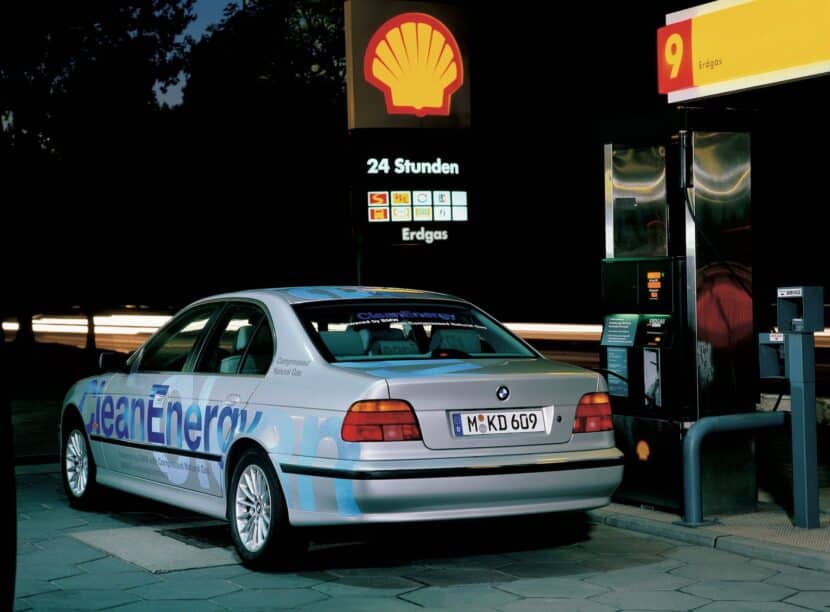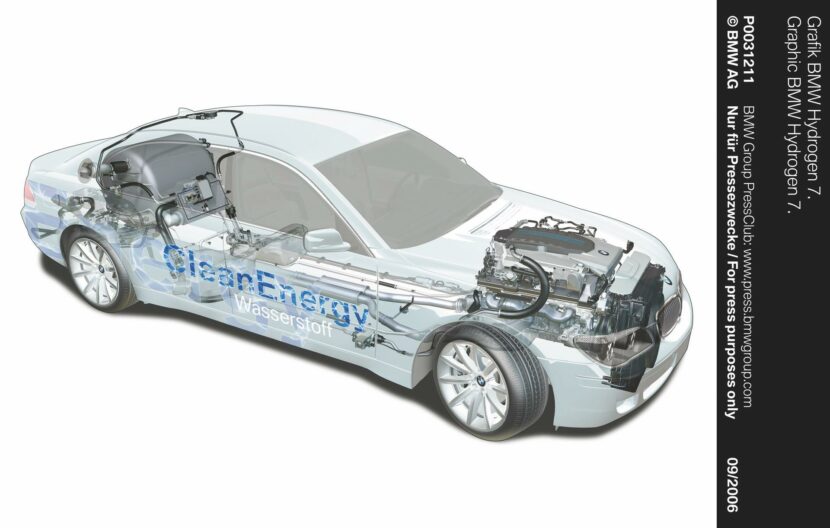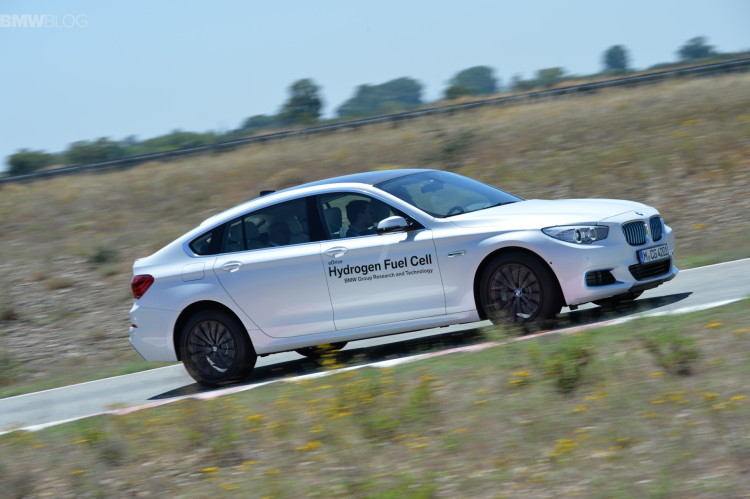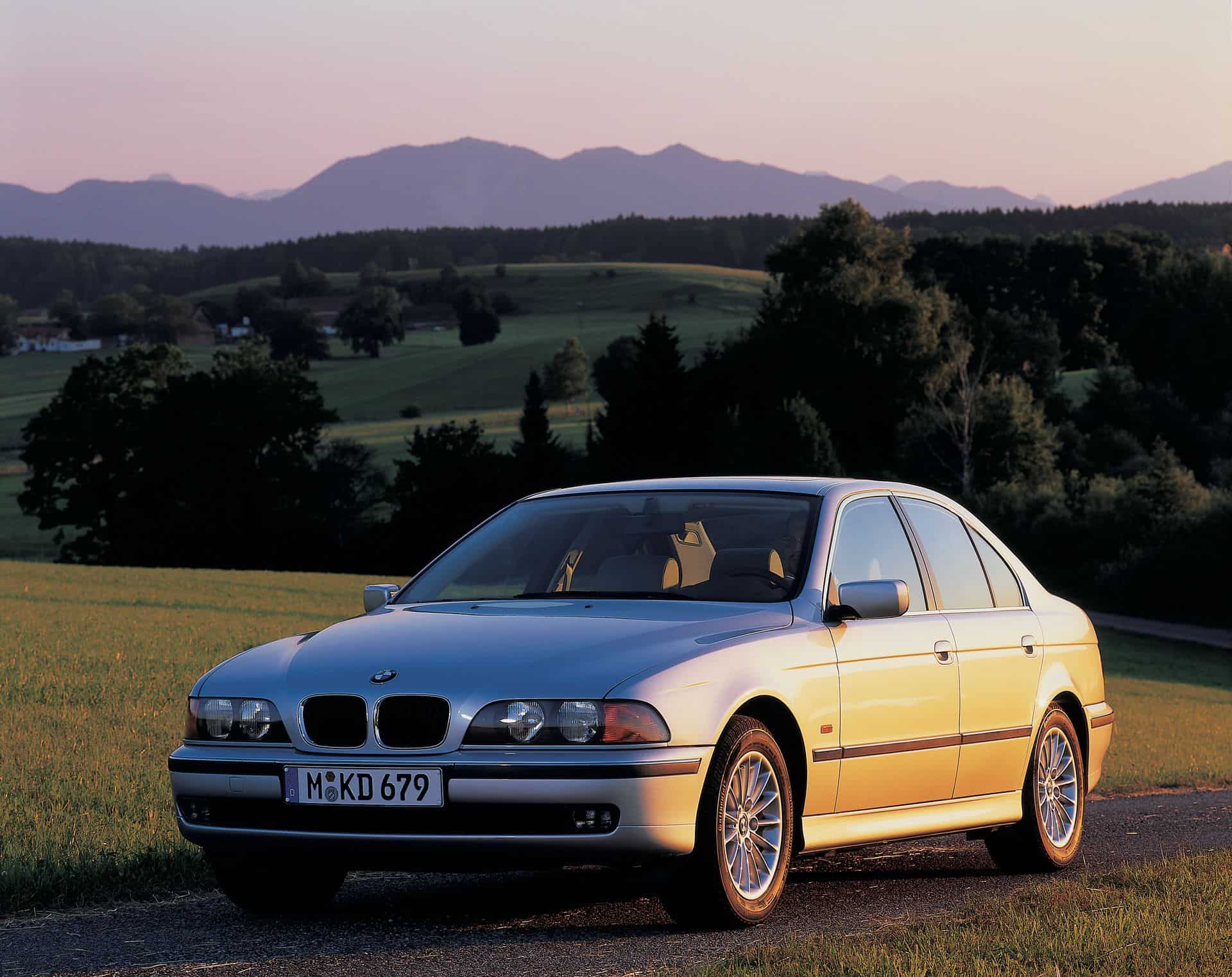With the ever-increasing specter of electric cars (shudder), it’s easy to forget that BMW made a significant effort to introduce clean emissions vehicles onto the roads. The 1983 BMW 325e and 525e, onwards from 1983, were commendable efforts, achieving a genuine 40 mpg with careful driving during long motorway runs at legal highway speeds. However, BMW had its sights set on something better for the future.
It has been nearly 30 years since BMW built their first production-ready NGV (natural gas vehicle) in 1994, which was launched in March 1995. The first two press cars were both Boston Green Metallic: an E36 BMW 316g Compact and an E34 BMW 518g Touring. While these pioneers were far from today’s hydrogen fuel cell-powered electric cars, they were petrol-engined vehicles with CNG (compressed natural gas) injected into the inlet manifold, allowing them to run on either gas or petrol.
BMW’s Early Attempt with CNG Vehicles
CNG, stored under pressure, is methane, consisting of four hydrogen atoms to one carbon atom. As a fuel to power an internal combustion engine, it produces around 25 percent less carbon monoxide. While the total hydrocarbon emissions aren’t significantly lower, the high hydrogen content in methane results in cleaner emissions.
CNG works better with larger engines due to its lower calorific value, reducing engine power outputs by around 15%. This reduction is acceptable in a V8 engine with 300 bhp on petrol but not as suitable for smaller engines, as it reduced the 316g’s power output from 101 to 88 bhp. Despite this, CNG boasts an octane rating of around 130 compared to regular petrol’s 95, which makes it even more efficient for specially built CNG-only engines.
Both cars used standard, unmodified SOHC M43 engines: a 101 bhp 1600 in the 316g and a 115 bhp 1.8 in the 518g. The petrol tank remained, but the CNG gas tank was located in the rear of the car. In the Compact, it replaced the rear seats, rendering the car a two-seater, while the 518g remained a four or five-seater with the gas tank in the trunk.
BMW claimed that about 85% of the previous E34 Touring loading area was still available, albeit without the fold-down rear seats being usable. The cruising range on gas was around 140 miles for the 316g and about 100 miles for the 518g. In terms of performance, the 316g could reach 110 mph on gas and go from 0 to 60 in just over 15 seconds, as opposed to 117 mph and 12.3 seconds on petrol. The 518g could reach 112 mph on CNG and complete the 0-60 sprint in 17.5 seconds, compared to the standard petrol figures of 123 mph and 12.3 seconds, resulting in a noticeable drop.
The First NGV: A Closer Look
Both cars had an 80-liter gas tank, capable of withstanding pressures of 200 bar or 3000 psi, with a filler adjacent to the regular fuel filler under the petrol flap. From the tank, gas flowed along a steel high-pressure pipe with a shut-off valve to the CNG metering unit under the hood. In the 316g, this unit was fitted on the exhaust side of the engine behind the screen washer tank, while in the 518g, it was located behind the air flow meter.
How CNG Technology Worked
The CNG head unit consisted of a metering unit with a pressure regulator to inject liquefied gas into the inlet manifold. Gas turns into liquid under extreme pressure, making it similar to LPG (liquid petroleum gas, comprising propane and butane), although LPG turns into liquid at lower pressure levels. This liquid was injected into the intake manifold through four high-pressure pipes that fed into the lower intake manifold. These pipes were positioned very close to the intake ports in the cylinder head and well after the throttle body.
The engine required two ECUs, one for regular petrol injection and another for CNG. The latter ECU provided the engine with CNG-specific commands for ignition timing and knock control. The petrol ECU was developed by Bosch as an evolution of the standard unit, while the CNG ECU could be turned on or off using a small switch on the dashboard next to the headlight aim switch. A gas tank gauge on both cars replaced the fuel economy ‘swingometer.’ All in all, it was a very neat conversion.
BMW did not expect to achieve sales miracles but aimed to sell around 1,500 units in its first year. In the end, however, only 468 were built until the end of Compact production in 2000, and 298 518g Touring models found homes.
Challenges and Limitations of CNG Vehicles
The problem with the two gas-powered cars was their higher cost, being over $3,000 more expensive than standard cars, and their limited fuel economy improvement. Moreover, they relied on cheaper gas to make financial sense, yet CNG was only 30% cheaper than regular fuel. When considering the loss of interior space and the availability of LPG with smaller tanks, the choice to go for CNG made little sense.
Today, the only spare parts BMW still supplies for the ‘g’ cars are the chrome ‘g’ boot badge, along with a few O-rings and hose clips. You might find a few remaining 316g or 518g models in the BMW museum, but with no new parts available, maintaining those with working gas systems can be quite a challenge.
Transition to Hydrogen Technology
In 2005, BMW introduced the Hydrogen 7, an E66-based V12 760Li that used hydrogen injection into the engine. One hundred cars were produced for selected customers to try out before the concept faded away. Hydrogen production requires a significant amount of energy, and similar to LPG and CNG, the challenges of manufacture and storage remain.
BMW and Toyota have been collaboratively working on fuel cell vehicles for the past decade. While BMW has primarily favored battery power, it’s likely that BMW fuel cell vehicles will eventually make their way to the market. However, the high cost of fuel cell powertrains remains a hurdle, as they are more expensive to manufacture than battery-powered cars. In 2015, BMW showcased a hydrogen fuel cell-powered 5 Series GT (F07) and a fuel cell-powered i8, suggesting that the future may hold more developments in this field.
How Hydrogen Fuel Cells Work
Hydrogen fuel cells are the power source for hydrogen cars, distinct from traditional petrol-engine vehicles. These cells utilize a Proton Exchange Membrane (PEM) to create electrical energy.
A PEM fuel cell operates through an electrochemical process involving the combination of two chemicals and the generation of electricity as a result. It comprises three key components, somewhat akin to a battery: positive and negative terminals with an electrolyte in-between, serving as a separating agent.
Here’s how it works:
1. Hydrogen Supply: Hydrogen is supplied from a tank through a dedicated conduit, reaching the positive terminal of the fuel cell.
2. Oxygen Intake: Simultaneously, oxygen from the surrounding atmosphere is channeled via a separate pathway to the cell’s negative terminal.
3. Platinum Catalyst: The positive terminal is typically composed of platinum, which plays a vital role in accelerating the chemical reactions within the fuel cell.
4. Electrochemical Separation: When hydrogen gas molecules interact with the platinum terminal, they split into hydrogen ions and electrons. These hydrogen ions, also known as protons, are essentially hydrogen atoms lacking electrons.
5. Proton Migration: Positively charged protons are attracted to the negative terminal of the fuel cell, traversing through the electrolyte. The electrolyte is enclosed within a polymer plastic barrier, allowing only protons to pass through.
6. Electricity Generation: Simultaneously, the electrons flow through an external circuit, creating an electrical current that powers an electric motor.
7. Returning to Neutral: The electrons eventually return to the negative terminal, reuniting with protons, and combine with oxygen from the atmosphere. This results in the formation of water vapor as a byproduct.
This process of electrochemical conversion enables the hydrogen fuel cell to produce clean and efficient electrical energy to propel hydrogen cars, making them a promising alternative in the world of eco-friendly transportation.













































































